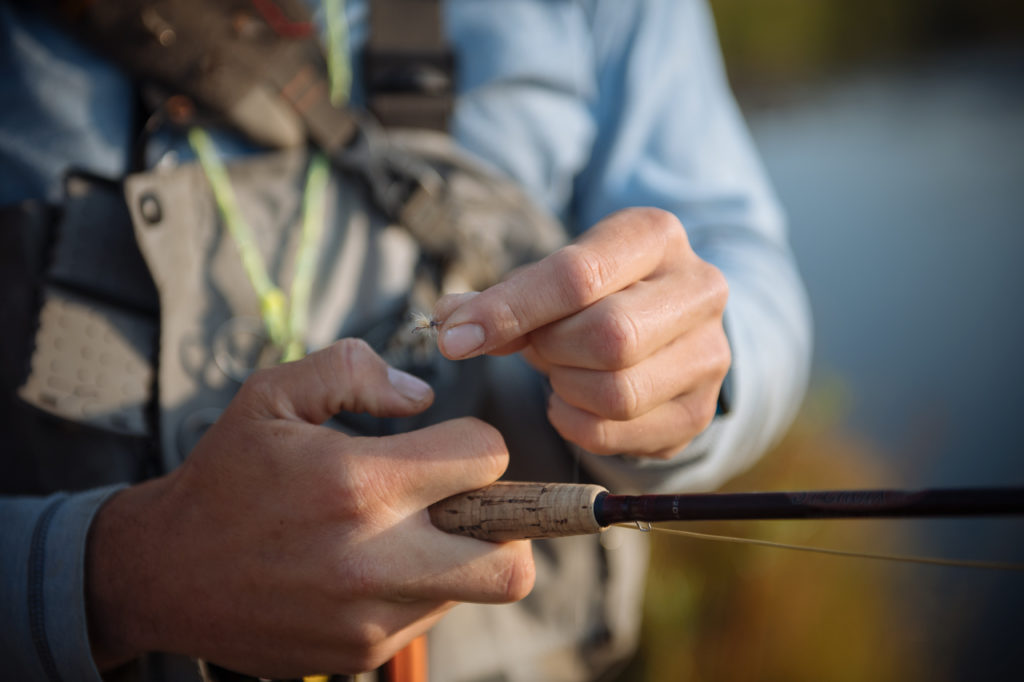
Prepare to Cast, Catch, & Release.
We’ve waited all winter long for hands and rods that aren’t frozen, yet now we’re stuck inside while fishing season is just ramping up. This beautiful time of year, post ice-off and pre run-off, is when the fish wake up and feed in frenzies. Rules may state that we stay home, but that doesn’t mean we can’t get organized and prepare for the season. Here are three things you can do at home so you’ll be ready when we’re able to get back out on the water.
Clean Your Fly Lines
Do you find that your floating fly line doesn’t float like it used to? It may be time for a new line, or in many cases, it just needs to be cleaned. Porous fly lines collect debris with each use and will weigh down with time. Here are some simple steps to get that fly line to float on the water again.
Supplies: Liquid hand soap only (do not use bar soap or dish soap), two buckets, two cotton cloths (sponge will damage), fly line dressing/treatment (for floating lines, helps repel water)
- Fill buckets with warm water and add hand soap to one bucket.
- Pull all of your fly line off the reel and coil it into the soapy water bucket until you reach the backing. You may keep the fly line attached to the backing, or you can cut it and reattach it when you are finished.
- Let soak for 15-30 minutes depending on amount of dirt on the line.
- Use a cotton cloth with the soapy water to grab one end of the fly line. Run the line entirely through the cloth until you reach the other end.
- Transfer the line to the clean water bucket to remove all soap residue.
- Use the second cloth to dry the line completely.
- If you have fly line dressing (Orvis Zip Juice Wonderline Cleaner is a great option), apply a small amount on the rag and apply to the line the same as before.
- Respool the fly line back onto the reel. Be sure to keep the line tight between your index and middle fingers on your non-reeling hand as you reel the line back onto the reel. This creates tight coils and will help prevent any gaps or tangles in the fly line. Also make sure to lay the fly line evenly across the reel for a well-balanced reel the next time you are out on the water.
Reorganize Your Flies
When fishing season is in full swing we often shove flies wherever they can go. Be sure to check wader pockets, your favorite fishing hats, even grab those ones that are hanging out in the miscellaneous places in your car. Once you’ve collected up your flies, there are many ways to reorganize them. Choose a method that what works best for you!
- By location or body of water – Choose your favorite flies per each type of water: freestone rivers, tail waters, warm water ponds, high alpine lakes, salt water flats, salt water marshes, etc.
- By type of fly – Dry flies, nymphs, midges, and streamers.
- By season – Winter: midge box, Spring: nymph box, Summer: dry fly box, Fall: streamer box.
Practice Your Cast
There’s no better time than now to practice your cast. Whether you are honing in that dry fly presentation and accuracy, or working on your double haul for streamer fishing, it’s always important to practice off the water. We recommend using your actual rod to understand the load and nuances of your own gear and to be ready for any fishing situation that comes your way!
Check out these resources from Orvis for in-depth casting practice: